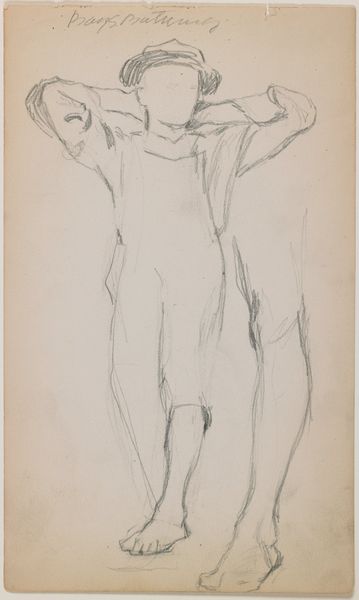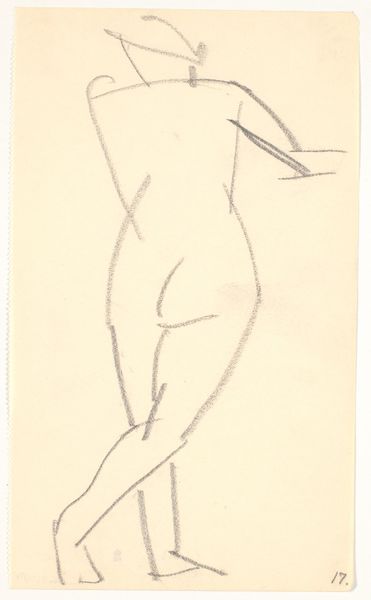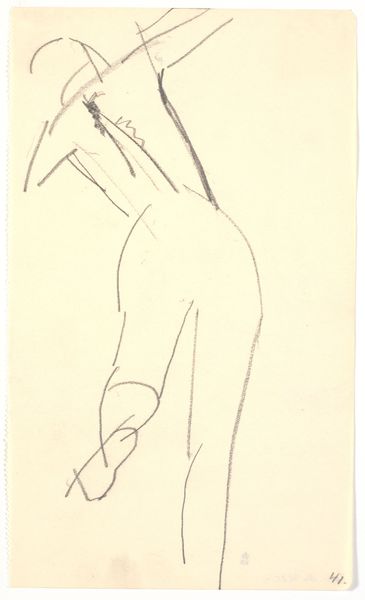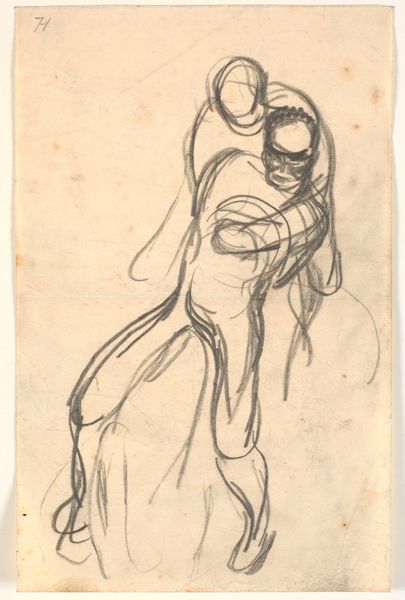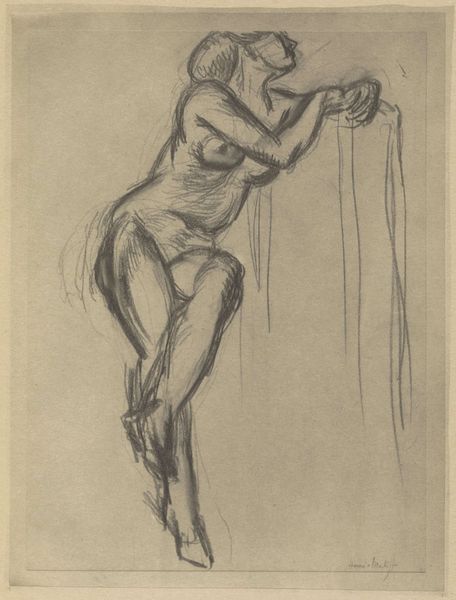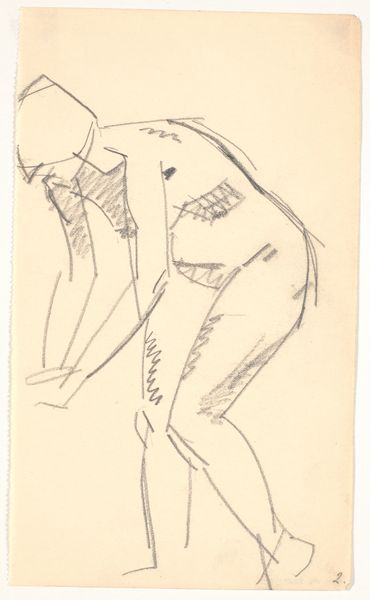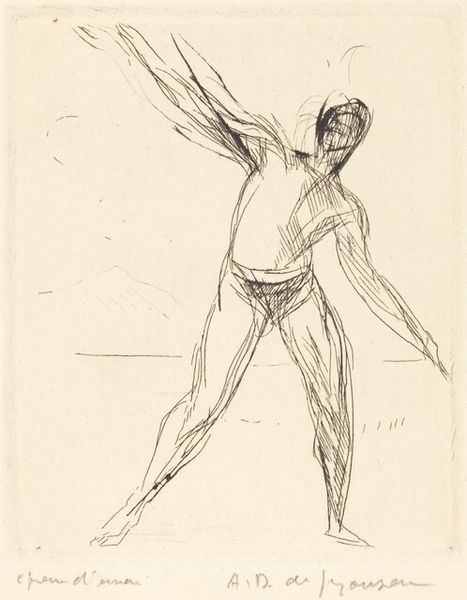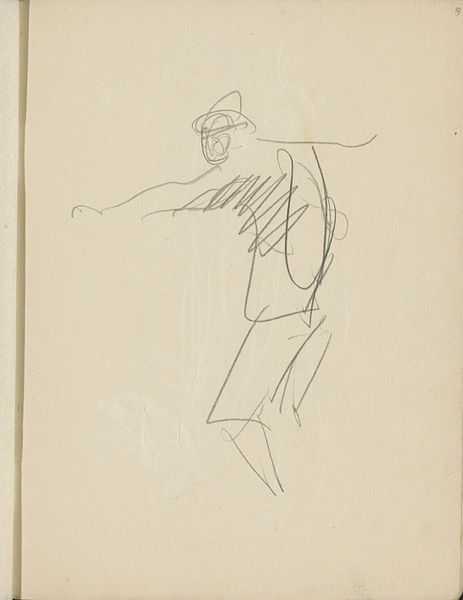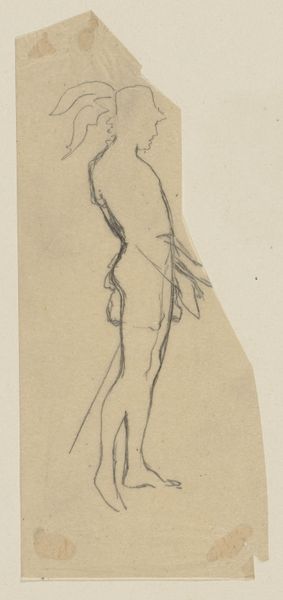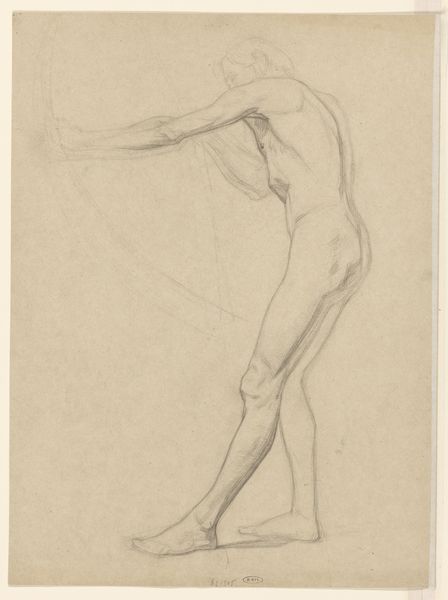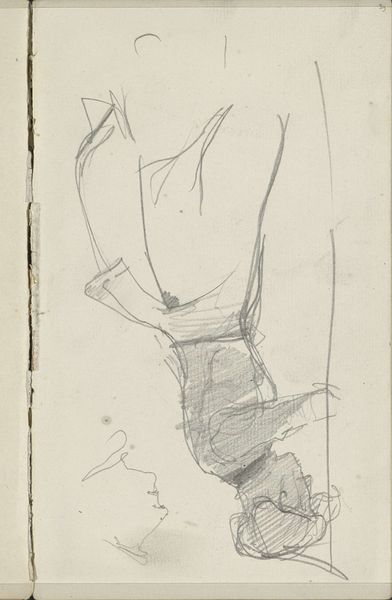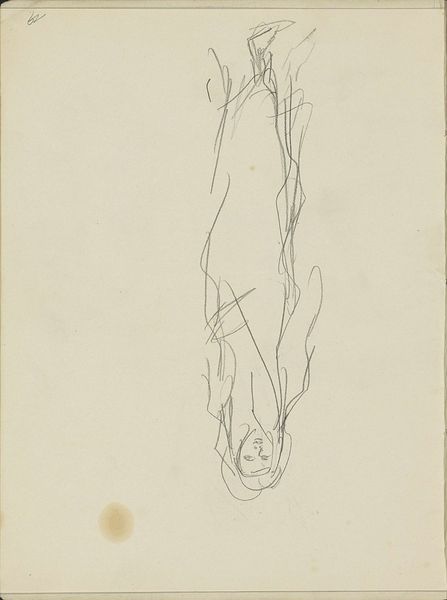
drawing, pencil
#
drawing
#
figuration
#
pencil
#
expressionism
Dimensions: 288 mm (height) x 210 mm (width) (bladmaal)
Curator: Karl Isakson rendered this arresting image in pencil, some time between 1919 and 1920. It’s titled, "Kain og Abel", so “Cain and Abel." Editor: It's such a raw, unsettling sketch. There’s a gestural quality to the linework, a brutal sort of…fauvism of feeling, almost. The angular, skeletal figures against the emptiness is haunting. Curator: Haunting indeed. Considering its display here at the SMK - Statens Museum for Kunst - we must ask about the implications. Depictions of the Cain and Abel story often portray the moment of the murder. Isakson avoids this obvious and perhaps sensational depiction of biblical narrative, presenting to us the spiritual and psychological toll that guilt may impose on humanity. The institutional history suggests its value is tied less to sensationalism and more to theological or philosophical exploration. Editor: I agree. He presents guilt as physically contorting. Abel is hunched in agony, while Cain remains standing tall over him; this speaks to the patriarchy that reinforces such destructive behavior and emotion as acceptable displays of power, which have always seemed to serve Cain and never Abel. Cain's blankness seems to echo something beyond mere personal angst – perhaps something about the nature of violence itself. Curator: The expressionistic style accentuates this rawness, I think. His simplification, those brutally efficient lines, remove the buffer of traditional representation. He presents this Biblical episode without idealization, revealing some fundamental unease in humanity. Editor: Absolutely, this is far beyond an interpretation of brotherly love gone sour, as Isakson clearly directs this narrative to critique contemporary male-male relational dynamics as those stand across class, religion, race, sexuality, or any other kind of social structure that seeks to dominate. Curator: I find this rendering forces the viewer to really confront the historical context of such an infamous murder that speaks to issues regarding morality. Editor: Yes, ultimately it raises important questions about power, dominance, and our collective capacity for violence and shame, and challenges the historical narrative of brotherhood.
Comments
No comments
Be the first to comment and join the conversation on the ultimate creative platform.

